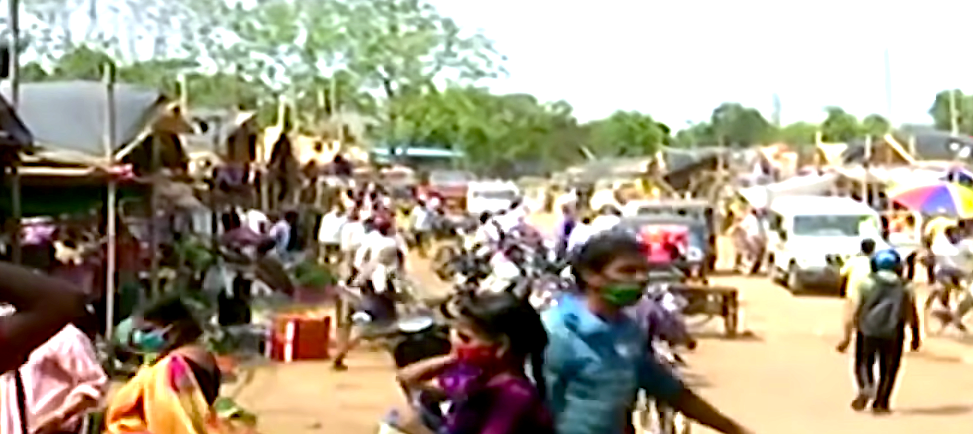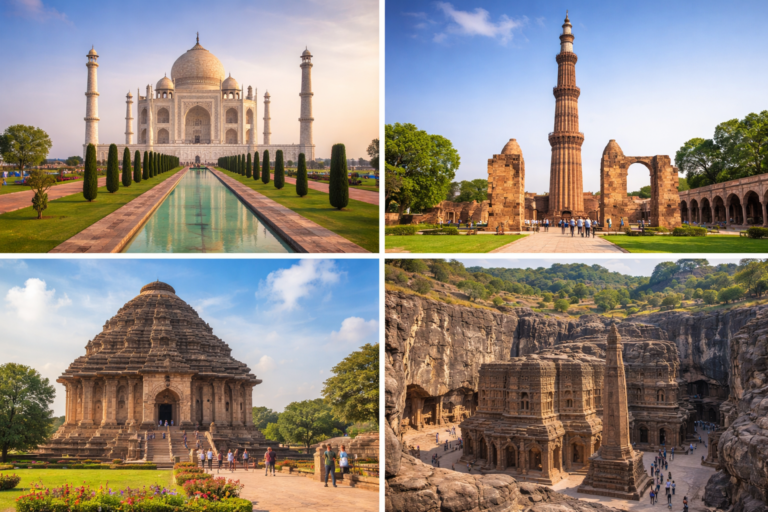
 – By Debi Mohanty*
– By Debi Mohanty*
Bhubaneswar: Since Mid April, Odisha has been worried of the rise in COVID-19 cases in the adjoining states of Andhra Pradesh, Chhattisgarh, West Bengal and Jharkhand as well.
On May 8, Sundargarh a district in northern Odisha sharing borders with Jharkhand and Chhattisgarh, recorded 1922 cases, the previous day the number of new cases stood at 2,073. On both days, Sundargarh accounted for the highest number of cases in Odisha.
Though, it witnessed a drop in numbers 943 (May 9) and 824 (May 10) cases, the district stood second to Khordha district-of which Bhubaneswar is a part. Sundargarh is one of the worst affected in Odisha. Thousands from Bihar and Jharkhand work in the industrial city, Rourkela in the tribal dominated Sundargarh district.
Concerned at the rise in cases, a high-level team led by AK Tripathy, the principal adviser to the chief minister, visited Sundergarh district and reviewed the COVID-19 situation on May 9.
“There has been an alarming rise in COVID-19 cases in Sundargarh. At least 90 ICUs and 120 oxygen beds will be added to the existing facilities in the district. I thank the central public sector undertakings such as the RSP and NTPC for supporting the fight against Covid-19 in the district,” Tripathy said after a review meeting, also attended by the National Health Mission director (Odisha) Shalini Pandit.
Meanwhile, with emergence of a new and more virulent Covid strain (N440K) in Andhra Pradesh and Telangana, Odisha government has imposed stricter measures in the bordering districts to monitor flow of people from both the states. The AP strain, touted to be far more dangerous than its other variants- has scared the people.
All coming to Odisha from Andhra Pradesh and Telangana by personal or hired vehicle, trains and flights have to undergo mandatory institutional quarantine for 14 days in temporary medical centres (TMCs).
Also considering the surge in cases in Chhattisgarh and West Bengal the main entry points at respective borders have been sealed as well. Although the administration has been monitoring the border posts for over 15 days to check trespassers, enforcement has been tightened to not allow further surge in cases.
Fear of infection has put Supriya Jena (name changed) a nurse at a private hospital in Bhubaneswar in a spot. Having cleared the test, she is set to join the state government as a nursing officer. Before her posting Supriya is thinking of leaving her septuagenarian widow mother at her village in Bhograi block of Balasore district. But, the West Bengal factor bothers her.
“My village is just nine km from Digha, the small beach town in West Bengal. Every day people from both sides cross the border. I have heard, a few people in our locality have already died of Covid. I don’t know what to do,” Supriya says in between speaking to her brother.
However, Ganjam district bordering Andhra Pradesh and one of the worst affected in the first wave of Covid 19, has reported fewer cases during the second wave. “That’s because, during the first wave a huge number of migrant workers had returned from Gujarat, Maharashtra and other states. This time, only a few have come back,” reasons senior journalist Bighneswar Sahu.
Sahu who had lost his mother to Covid last year, however, says, it’s difficult to know the actual number of Covid cases, particularly in the rural areas.
On the other hand, Bolangir (in western Odisha) based journalist, Rajib Sagria is of the opinion that, the government may have kept surveillance on the main check points, but there are so many rural routes connecting Chhattisgarh. “Many people take such routes,” says Sagria.
Both Sahu and Sagria though believed that Bolangir, Kalahandi and Nuapada witnessed a surge in cases particularly in April due to the Kumbh returnees.
Narrating that the western Odisha districts particularly, Kalahandi, Nuapada and Bolangir depend heavily on Chhattisgarh, Sagria says, “From grocery items to vegetables, 80 percent of our daily essentials come from Chhattisgarh. So, it’s not possible to completely block movement between these districts and the neighboring state.”
Referring to the Chhattisgarh and Andhra Pradesh borders, Ch. Santakar who runs Radio Koraput, echoes Sagria’s sentiments as he says, “The border is so vast that it’s practically not possible to monitor the entire stretch. You can’t keep a watch on those who take the short, narrow passages and return home by walking. Many prefer to cover the hilly routes as well.”
According to former information commissioner of Odisha, Jagadanand, sealing of national highways or artery roads may put a check on people’s movements between states, but can’t check it completely. ”Covid is one of the biggest biological disasters of our time, should be dealt at a pan India level. The pandemic doesn’t consider territories or geographies,” opines Jagadanand.
As on May 10, the cumulative cases in Odisha stood at 5,44,873 of which 4,57,569 had recovered. While the state had 85,054 active cases, 2,197 had died.
Meanwhile a 14-day-long lockdown with weekend shut downs from May 5 to May 19 have been clamped in the state. “The need of the hour is to take as much personal precaution as possible. The second wave has been far worse than the first wave we had experienced last year,” said a leading critical care specialist at a leading corporate hospital in Bhubaneswar. Stating that, not a single ICU bed in his hospital was available, he added, “We are not in a position for any new admission. The government is doing what it can do best, the people must comply. A little negligence can be deadly dangerous.”
*The writer is a senior journalist





